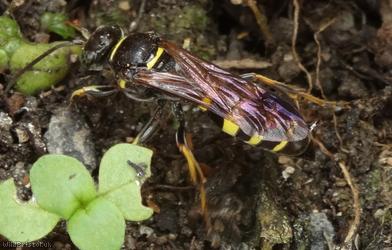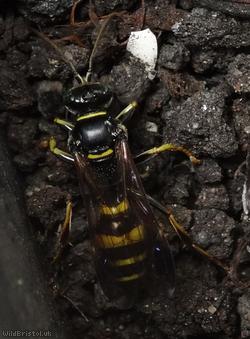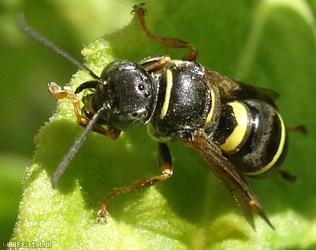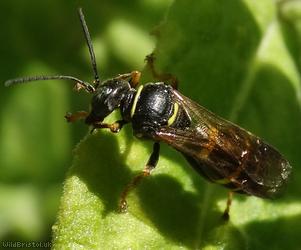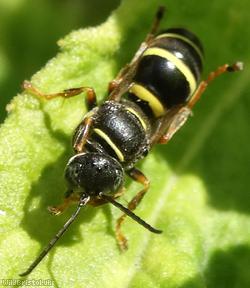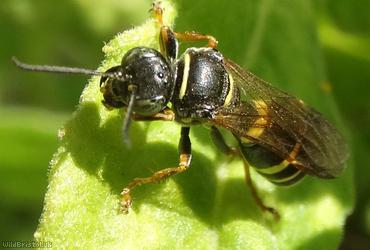Broad-banded Hopper Wolf - Gorytes laticinctus
Favourite Photos
Species Description
Rare and sparsely distributed in the Southern half of the UK. Since the turn of the century it has been on the increase and continues to extend its range Northwards. It's likely that climate change, its ability to use garden pots for nesting in places where the indigenous soil is inappropriate and better recording are the reasons behind this. Habitat includes: Rough vegetation such as brambles in open situations such as woodland edge, scrub, field margins, gardens, parks, allotments, churchyards etc. Life story: Females create nests by tunneling into loose dry soil (sometimes uses garden pots). Once a tunnel is dug the female goes off hunting for Froghoppers (Philaenus spumarius) or sometimes other Auchenorrhyncha. Once caught and paralised, the prey item is brought back to the recently made tunnel and is then stuffed inside. Multiple trips are needed before there is enough food for her offspring. Once filled an egg is then layed on top of the Froghopper larder and the tunnel entrance is backfilled slightly. She will then immediately move onto the next, repeating the process until all eggs have been released (a few weeks) and soon after dies. Diet: Adults = nectar on umbellifers (I've observed them use a parsnip I let go to seed). Larvae = Common Froghoppers (Philaenus spumarius). Flight period: Mid June to mid August, sometimes extending into September but I've recorded them as early as mid April and as late as mid October meaning there must at least in milder locations be 2 generations a year. Length: 9 - 13 mm.
